| Columns Retired Columns & Blogs |
Engaging and entertaining, but also leave having a sense of this component's sound.
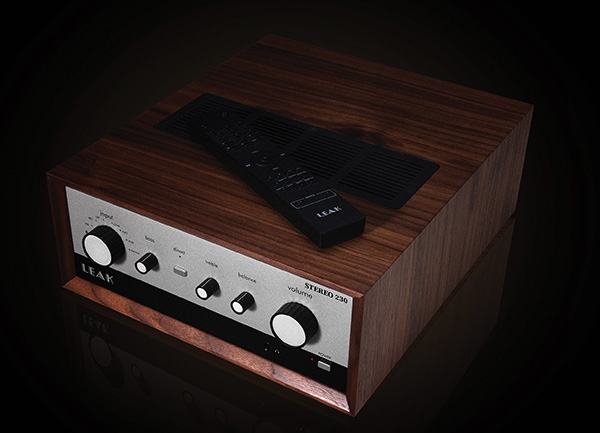
That's a lot of expectations for a product to live up to, but then our hobby is all about expectations. How many expectations spring to mind when you think about solid state, tubes, digital, class-D, moving coil, LP, CD, streaming, MQA, MDF, power supplies, AC power, capacitors, shorting plugs, fuses, bass, cost, your listening room? Is your head spinning yet? If not—and possibly if so—you're an audio enthusiast! You thrive on conjecture, guesstimates, instinct, uncertainty, personal bias, vague science, and, above all, hope for a big sonic payoff. It's who you are, and it's why regular people can't be audio hobbyists. It would drive them mad.
Prior to this review, I had expectations about the product under review, the Leak Stereo 230 ($1695 with the walnut enclosure), based on, among other factors, price. Those expectations seemed justified when I first saw the Stereo 230's compact shipping carton. I assumed it would weigh much less than it did—28lb it turns out, heavy enough to cause my outstretched arms to buckle under its weight when the UPS guy handed the box to me. When that happened, my first thought was, "I hope he didn't notice," followed by, "Is the Stereo 230's power supply that substantial?"
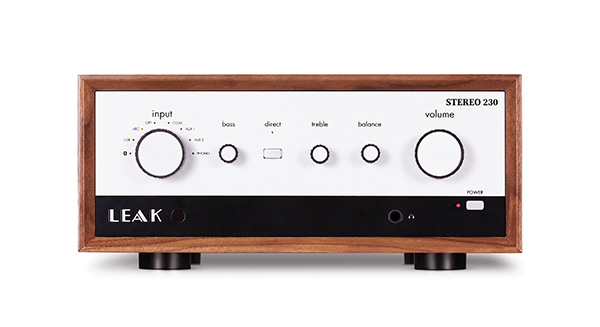
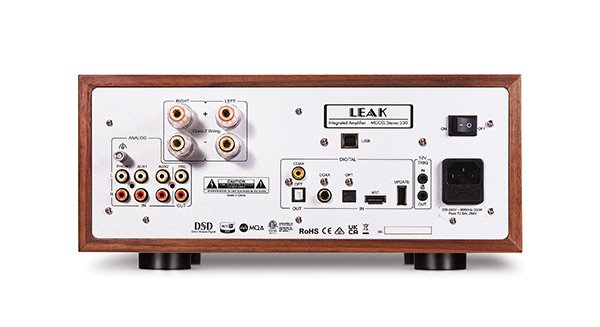
The Leak Stereo 230
Yes, it is. But first, some background. Leak was on the front lines of the audio revolution that begat hi-fi as we know it. Harold Joseph Leak founded the company in England in 1934, two years after the electric guitar was invented, two years before the BBC began television broadcasting, and five years after the start of the Great Depression.
Throughout the '40s and into the '60s, Leak manufactured amplifiers, loudspeakers, cartridges, turntables, and—perhaps more ubiquitously in North America—tuners, especially the Trough-line tuner released in 1955. Among Leak's other offerings were significant design "firsts": the first tube amplifier to lower harmonic distortion to 0.1% (footnote 1); the first speaker to implement true-piston cone technology. Production continued until 1979, when Leak succumbed to the pressures of international mass-market competition.
China-based IAG Group—owner of Luxman and a bevy of well-known English brands—revived the company by reinstating its design facilities in the UK. In 2020, the year that would've been Mr. Leak's 113th birthday, Leak's first new products in 40 years, the CDT transport and the Stereo 130 amplifier, were released. The 130 is a rejuvenated Stereo 30 from 1963, said to be the first commercially available solid state amplifier. The Stereo 30 put out 15Wpc. Jimi Hendrix owned one.
Launched two years after the 130, the subject of this review looks like the 130's twin, but it comes with higher aspirations. Per Leak's press release, the Stereo 230 is "the evolution of the acclaimed Stereo 130, offering more versatility, much more power, and improved sonics."
In an email, I asked Jamie O'Callaghan, global sales and marketing director for the IAG Group, how the 230 was fundamentally different from the 30. He responded, "We now have 50 years of technology, innovation, and learning to enhance the offering.
"One key difference," he wrote, "was the development of transistors over the last 50 years. The modern transistors are designed to offer higher efficiency. This alone represents a major improvement over the original 30.
"Another important change from the Stereo 30, and from the Stereo 130, is the 230's use of an intelligent 'double parallel' design in its power stage. It not only increases power output compared to the other models but allows for easier handling of difficult loads and low-impedance speakers.
"We also designed a precision DC Servo Circuit to control and stabilize the power amplifier's DC voltage, resulting in improved output quality, especially in the bass, and a clean and warm sound, characteristic of Leak."
What about that arm-buckling weight? "The power supply is heavy!" Jamie said. "Its transformer weighs 2.9kg"—that's 6.4lb—"and was made exclusively for the 230. We do not use off-the-shelf products. It's a staple of our class-AB design—the transformer is key to it all. But, naturally, a lot of the 230's weight can also be attributed to its chassis and [optional] casing. It's a real wood veneer and a real wood casing, similar to the Wharfedale Linton's cabinet." Wharfedale is also an IAG brand, along with Quad, Mission, and a couple of others.
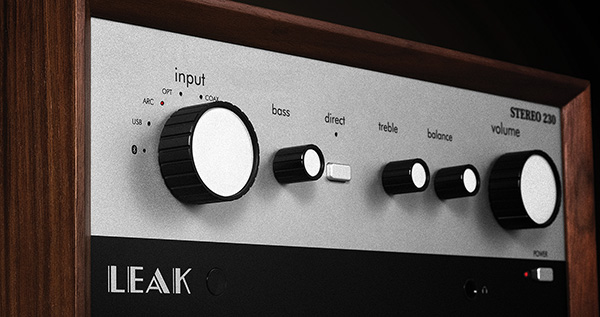
The 230 combines old-world features—a phono stage, headphone jack, and tone controls—bunked alongside new-world ones that were half a century into the future when the model first came out. These include hi-rez streaming up to 32/768 PCM, native DSD512, and full MQA decoding. Digital processing is handled by a 32-bit ES9038Q2M Sabre Reference DAC chip using proprietary circuitry said to make the most of ESS Technology's Hyperstream II architecture and Time Domain Jitter Eliminator to eliminate noise and improve high dynamic range. The 230 is also "Roon Tested," meaning that Roon verified that the product works with Roon's management software but, in contrast to Roon Ready products, does not use Roon's RAAT streaming protocol.
The Stereo 230 is also equipped with aptX HD Bluetooth and HDMI ARC connectivity (for use with a television). Its amplification stage is a MOSFET-based class-AB design said to deliver 75Wpc into 8 ohms or 115Wpc into 4 ohms. (We'll see what JA's measurements say.)
Why not class-D, which is popular now, even in retro products like this? "Class-D offers many virtues, but it's just not Leak," Jamie said. "The Stereo 230's baby sister, the Stereo 130, was several years in development with a very stringent design goal of making sure that the ethos and soul of the Leak brand weren't lost in pursuit of building a modern amplifier. The 230 comes a good four years after Leak was revived within our engineers' labs. It's a genuine innovation for the company in terms of design, compatibility, and power supply, and it's still a 'Leak'. We don't believe that would have been possible to do in a class-D design."
Among the control knobs on the 230's faceplate is a direct-mode push-button, which bypasses the tone controls. I found the input selector smartly constructed. Active inputs are flanked by a dotted light that confirms input selection and blinks when the volume is raised or lowered via the nicely finished, slablike remote control.
Encased in the optional walnut enclosure, I found the 230 attractive in a timeless way.
Listening
The Stereo 230 arrived brand-new. If I was expecting the unbroken-in Leak to deliver a flat, harmonically meager sound compared to that of my $15,000 class-A Shinai integrated—well, that's not what I heard. What initially knocked me back in my seat in a moment of unexpected incredulity was the depth and integrity of the soundfield. It was architecturally molded.
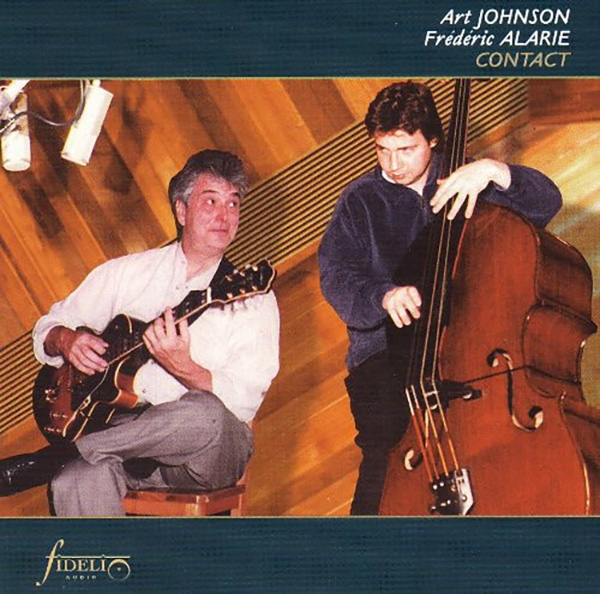
Granted, I was playing an audiophile CD—Contact (Fidelio FACD 001) by Art Johnson and Frédéric Alarie, an analog recording of double bass and an electric guitar, captured by gear bearing the names Ampex, Tascam, Nirvana, and Transparent. It's meant to sound intimate, pure, resolved, natural. Fresh out of the box, the Leak brought that sound out. I had only wanted a taste of the Leak before putting it through its break-in paces—with zero intention of judging it—but judge it I did, because what I heard caught me unexpected.
As soon as the album's first track kicked in—Stevie Wonder's "You Are the Sunshine of My Life"—I was peering down a room transposed into my own: the recording studio. It stretched quite a bit beyond my own room, about 25' deep, judging by the acoustic reflections delineating its shape. Alary's double bass sounded well-proportioned and hearty in tone and low-end weight. To borrow the title of an album by The Who, the low notes and their rhythm were meaty, beaty, big, and bouncy. And that guitar! String tones sounded realistic, not just in big-scale character but in how their smallest shifts revealed varying states of string tension. The curlicues at the end of notes were appropriately twangy, steely-resonant, and spatially carved-out.
Listening to Contact, even in these early hours, brought to the fore how fluid and coherent the Leak's sound was. There was nothing hard or choppy. Its tonal balance tended more toward sweet than warm. I heard no frequency-response bumps, just an overriding naturalness of timbre and a bloomlike roundness to the notes.
But what spoke louder than any word I might find to describe the Leak's sonic attributes was the about-face of my intentions for the day. What I expected to be a 3-minute casual audition turned out to be two serious, 30-minute auditions the day I turned it on for the first time, sessions that ended up being written about in this review. I was expecting sound from an unbroken-in, $1695 solid state amp to grate. Another expectation bites the dust.
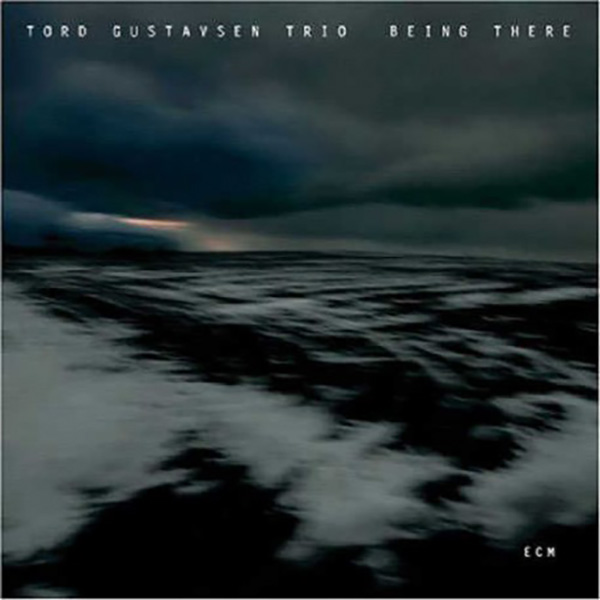
Three days of continuous break-in later, I settled in for official business. I dropped the laser on Tord Gustavsen's "At Home," from his 2007 album Being There (CD, ECM B0008757-02), and was greeted by a carousel of piano tones endowed with just the right amount of string-felt jangle, sultry efflorescence, soft-colored hues, and finely measured force. Decays seemed elongated. Again, as with Contact, I heard a mellifluous musical delivery, an evenness to the presentation coupled with a rhythmic pace that was poised and self-assured. When the drums and double bass joined the piano, the picture was big and wide, with life-sized instruments living inside. But most of all, it sounded utterly cohesive. The soundfield was a unified, meticulously sealed whole.
The Leak's overriding character was one of musical buoyancy disposed of light and color, with an effortless liftoff of notes. It was uplifting psychologically. The effect was mood-altering. At $1695, it's good for a few therapy sessions.

Engaging and entertaining, but also leave having a sense of this component's sound.

Fortunately not another review of a Bugatti, because no one (here) buys one. I'm always a bit suspicious of fashionable retro vintage look equipment. Luckily this is one that sounds good. But "just" (unexpectedly) good for the price, or outstanding in its price. That is what we all ultimately want to read here, how does it sound in comparison to the reference in the price range.

Great review, Rob -- I really love the Leak gear, especially its retro-cool vibe. And it was my utmost pleasure to assist!
Enjoy the holidays!
Tom


... $1,800 Yamaha R-N1000N, which includes a room correction function - but lacks a wood cabinet.
https://usa.yamaha.com/products/audio_visual/hifi_components/r-n1000a/index.html

This is the only place to post on this SERIOUS issue/development with Stereophile.
Its long-time running Forum and all content seem to have been VANISHED.
Many of us have contributed time and effort into our posts in the Forum. For almost two decades.
It's OKAY for Stereophile to discontinue the FORUM as Stereophile deems necessary. But please leave the content in place. It's disingenuous to disappear it from existence without proper, public notice.


Too bad, class D is the best you can get. Why? Because you can make class D sound like any amp ever built, put a tube on the input stage and bias it just right and bingo the output sounds like a tube amp. A jfet, sure, if that's the sound you want.
It's not magic, it's electronic engineering, it's based in science. The only difference between an oscilloscope and an amplifier is what you want the instrument to do.
I get it there's no flash, no mystery and less money to be made but those are the facts, that's the science and just like it takes science to design an amp it takes science to design an arbitrary wave form generator (AWG).
I laugh when I hear all about how the power supply is different or the bias is different, etc.
We can make an electric car for $30k with sophisticated motor technology but we can't seem to make a decent turntable for $1k.
This is why engineers find audio so amusing, we need to break in an amp for 100 hours before it works right. I have instruments than can measure down to picoamps. I've never been told or read anywhere in the instructions that I have to run it in for 100 hours before it works right!

Yes, measurements are important.
So, too, is blind listening--where not uncommonly what is qualitatively discerned has yet to be captured through quantitative means.
I'll leave it at that.

Can anyone hear a signal that's 100 dB down and 60 kHz? Forget the 100 dB down, 0 dB. No one can hear it, your dog can't hear it, but you can measure it on a instrument easily.
Anyone ever buy a test instrument where the manufacturer told you to use it for 100 hours before it works right? No one would buy it!
Anyone ever buy a modern instrument with a rectifier tube? No, you can't hear DC. An engineer who designed a scope with a rectifier tube would get laughed at and fired.
Here's the problem, audio reviewers don't know electronics, so some marketing guy gives them a a pile of nonsense and they have no reference to understand that it's meaningless, so they parrot it like it actually makes a difference in how something sounds or works. So now we have these $100k turntables that are nonsense and we have line conditioning that's useless.
My favorite, stands to keep wires off the floor... no wait vacuum tube rectifiers .. no wait, $1k a foot cables... no wait.....
The only valid testing is a DBT, that's science, everything else is subjectivity.

...they shop
and buy what they like.

We know what makes an amplifier sound a certain way. For example we know people like harmonics. Nelson Pass did a brave thing, good old Nelson! He sat people down in front of amps and asked them what sound they liked. He then designed his amps for that distortion - we like distortion, just certain harmonics. Before Nelson everyone was clamoring about low distortion so he comes out with an amp full of second harmonics, if you look at a scope you can see them. People love his amps, I love second harmonics, I put tubes in front of class D full of second harmonics that I contoured to what I like. No mystery, no voodoo, basic science and at a reasonable cost.
So we know what sounds we like and we know how to get them.
Electronics is a very sophisticated field, there's no amp today that we can't contour to the sound people like - whatever that sound is.
The problem is there's a lot of money in audio so a reviewer who can't hear the difference between two amps or turntables is sunk, he'll never get another piece of equipment to review, that's why they don't do DBT's.
Caveat emptor, I'm giving you the uncommercialized science. When I say class D is the future and it shadows everything else you can bet I've tested it and tested it. Class D can give you any sound you like, it's neutral, go listen to Bruno Putzeys from Purifi.
The problem is you can make class D inexpensively. So what do you think guys like Dan D'Agostino with his $50k amp think about that? Put some more gold on it Dan, that'll make it sound better!

...I don't know why.


... $1,100 Technics SL-100C turntable?
https://us.technics.com/products/direct-drive-turntable-sl-100c
https://trackingangle.com/equipment/technics-sl-100c-is-a-grand-bargain

Here's the problem, there's some reviewer who thinks he or she can hear the difference between a $1k turntable and a $5K turntable, or $100k turntable. That's why people buy $100k turntables, they think or have been fooled into thinking it sounds better.

...but the Coke in China tastes different.
Why?

It can be measured scientifically.
"The basic ingredients and process used to make Coca‑Cola are the same in all countries, although people perceive taste in very different ways. It is possible for the same soft drink to vary slightly in taste due to other factors such as the temperature at which it is consumed, the foods with which it is consumed, or the conditions in which it is stored prior to consumption."
source: Coca-Cola

...is not very exact.
And what if I don't like it?

That doesn't change the fact that differences can be observed scientifically or amplifiers can't be designed to satisfy different audio tastes.
You're trying to add mystery to audio the same way you tried to add mystery to why Coke tastes different in different countries. Go back and look at your first statement.

Don't like it, wrong colour, fits with the decor, just a bit too big but will do, on sale, etc....
DBT?
Nah.

The DBT is science, what do you propose we use instead of science? Subjectivity?
"The earth is flat."
"What's the proof?"
"Because I think it is."
That's called subjectivity.
You're sick, you go to a doctor, he says you have high blood pressure, that's called science. You're sick because I think there are pixies on the moon is subjectivity.
It's useless.

...dbt is not shopping.
So read tech journals, not Stereophile.

Can I read Stereophile to see what new music is released? Sure.
Can I read tech journals AND Stereophile? Sure!
What's your point?


...otherwise you have bias.
Blind.
Double.

You don't shop much, do you?


Because incel life is unrecoverable and leads to opioid self-medication ... and palliative care.

Respects to T.S. Elliot
"Shape without form, shade without colour,
Paralysed force, gesture without motion"

If we don't use DBT's all that is left is subjectivity.
The world is flat because I think it is.
People thinking they can hear the difference between two resistors but fail miserably trying to do it in a DBT.
Magazine editors don't do DBT's because if they can't hear the difference, and by the way that has happened often, they lose advertisers. Did you ever read a bad review? You never will, they'll lose advertisers.
You think Dan D'Agostino is going to be happy if a reviewer can't hear the difference between his amp and a class D for a fraction of the price? He's scared to death of that and he knows it won't happen in popular audio magazines.
Engineers laugh at audio designs. What do you think would happen if Keysight sold an instrument with a vacuum tube rectifier and then told you to use it for 100 hours before it works right. That's rhetorical, they'd be out of business.
You can't launch that spacecraft to the moon for 100 hours because the transistors have to break in!

Go back to Gr. 5.
They know how to do "science".

You can't simply say you made something up, you have to disprove what I said.
Does Keysight tell customers they have to run their instruments for 100 hours before they work right? Never, I own lots of instruments and never saw that once. disprove it.


"There are none more hopelessly enslaved that those who falsely believe they are free."

Here goes...
“Doublethink means the power of holding two contradictory beliefs in one’s mind simultaneously, and accepting both of them.” -George Orwell
I'm going to take a 2nd shot...
"Outside of a dog, a book is a man's best friend. Inside of a dog it's too dark to read." -Groucho Marx

...does DBT while shopping.
No one.

I do them right at home.
Because reviewers have shown they can't do DBT's they have convinced buyers to listen to their opinions which is how most people buy equipment. They give away magazines because on every other page there's an ad, that's how they sell a magazine for $13 a month when the internet has devastated magazine sales.
Show me a negative review if you think I made it up.

No one does dbt to shop.

...do a dbt at home?
Do you live alone?

DBTs are not part of the audiophile culture. DBTs are a cock blocker to our enjoyment of the audio hobby. We're not engineers, we're music lovers.
That aside, if you come here, you should, at minimum, not demand things from us—not in our own backyard. It's rude, and narrow-minded. We don't owe you anything, and maybe your perspective is lacking in self-awareness. Your opinion is just that: your opinion.
Oh, and audiophiles do AB gear comparisons all the time. That's how we choose our gear. We just don't feel the need to do it blindfolded.

DBT's are a scientific tool to differentiate components without bias, once we have chosen the components we enjoy the sound of there is no reason to constantly do DBT's. Am I stating the obvious here? Audio reviewers don't do DBT's for the same reason they don't give bad reviews, advertisers would stop sending equipment to review and stop advertising in their magazines. Look at your magazine, an ad on every other page. What would happen if a reviewer couldn't hear the difference between a $1k amp and $20k amp? Let me remind you that it was a reviewer who raved about a $3k amp driven by a $5 LM3886 chip! It was also a reviewer who thought he could hear the difference between different batteries powering a circuit, which is scientifically impossible - you can't hear DC.
If we can hear the difference between two components in an A/B comparison then we can hear them in a DBT - a priori.
The difference is that a DBT removes bias, intended or otherwise. (cognitive dissonance)
DBT's are not part of your audiophile culture. Maybe that's how audiophiles got stands to keep wires off the floor because they think they sound better
and vacuum tube rectifiers because they think they sound better than solid state which is scientifically impossible.
And, yes, I have designed instruments to allow me to DBT different amplifiers that I have designed right in my own home. It's called science and every audio amplifier uses the same formulas as every other instrument, the only difference is the function of the instrument. If you can't measure it you can't hear it. I have instruments that measure down to picoamps. There is no living creature that can hear differences that minute - none. Can you hear 250kHz, no creature can, can you hear the difference between 100kHz and 100,001 Hz? No, no creature can but we can easily measure it. We know how to make amplifiers to sound specific ways, electronic engineering is a very sophisticated science. Ask Nelson Pass about how to do that, he sat people in a room and asked them what sound they like then he designed amps to sound that way.
It's science and reason, what you do is up to you, it doesn't change how I design, listen or evaluate.
What's rude are the ad hominem attacks by some of the people here.

Mosfet50, go back to Gr.4 to learn the "scientific method"...
"In fourth grade, students will continue to develop skills in posing questions and predicting outcomes, planning and conducting simple investigations, collecting and analyzing data, constructing explanations, and communicating information about the natural world."
Go to college to learn how to use DBT properly.

...or shopping, mosfet50.
No one.

"No matter: I was seduced by the Method 3's warmth, beauty, range of color, and smoothness on top. Recordings that had previously sounded too bright and edgy in my listening room were now listenable, and those that were ideally recorded sounded smoother, with more color differentiation than ever. " JVS
You found a missing ground on the XLR but still buttered it over.

That's two DBT's a year and where are the links to those tests? Under what conditions and independent source were those tests conducted? After your comment on the "bad" review I want to read all the info, not just your opinion of how you did. And how many DBT's did you fail miserably on?
How many pieces of equipment have you reviewed over those 50 years?
But let's cut to the chase.
Regardless whether one's eyes are opened or closed science has established that the hearing itself doesn't change:
"As in the main experiment, our results provide evidence for the absence of any difference in perceptual sensitivity and criterion for open versus closed eyes."
Source: National Institute of Health
If you can hear it with your eyes open, you can hear it with your eyes closed. The difference is that with closed eyes we don't have the luxury of knowing which piece of equipment is which.
The result of that unknowing is doubt, you don't do DBT's because you doubt your ability to differentiate between products.
DBT's are science, without science all that remains is subjectivity - opinion. The world is flat because I think it is!
Stereophile doesn't do DBT's because manufacturers wouldn't send equipment in to be reviewed and they wouldn't advertise. They understand that if their product sounded no better than a product at a fraction of the price, they would lose a lot of sales.
It's electronic engineering, it's far more difficult to design a cell phone in the GHz range than any audio equipment. Reviewers and manufacturers want to create mystery around audio designs where there's none - voodoo.
That quote wasn't your statement, it was the statement of John Crabbe in 1976, it has nothing to do with you or your relationship to your advertisers.
The bottom line, audio has become voodoo, with all kinds of nonsense - tube rectifiers, preconditions, $25k cables, toroidal transformers, etc., etc.
I put the blame for a good part of that on audio reviewers who ran out of superlatives in 1976. Dan D'Agostino with an ad in Sterophile saying his amp is "better than perfection". No Dan, that's why it's called perfection, it's not possible to have anything greater than perfection! Geeze, you can't make this stuff up, simply amazing.

Prove you can hear the difference in a DBT, I'm still waiting for a magazine audio reviewer to do that.
(actually I'm not, it won't ever happen)
What's it got to do with interfacing with a magazine?

Gr. 5's know how to do "science".
Actually, I believe young people are learning about scientific inquiry in Gr.4!

...are real, mosfet50.
Maybe you are really mosfet49!
We'll never know...

Double blind test of the Tandberg 3009a mono amplifier (which used MOSFETs lol). Reviewer was Larry Greenhill, aka LG because he did a lot of reviews for Stereophile as well at the late, lamented Audio Magazine. The results were inclusive overall. 38 years ago.
https://www.worldradiohistory.com/Archive-All-Audio/Archive-Audio/80s/Audio-1986-01.pdf
That was easy, maybe learn to google.
Mark Phillips,
Contributor, Soundstage! Network.
PS - they have nearly all the old issues of Audio there, from 1947 until it shut down in 2000. It was unlike any other magazine covering consumer sound.

"He made 16 identification attempts over a 11/2 - hour listening session, using a Bryston 413. (dual -mono)
amplifier for comparison. The results were 12 correct out of 16 trials, a statistically significant score"
"During this second attempt, he achieved only seven correct identifications out of 16 trials..."
How do we know the conditions were the same? Because he said so? Do we get to examine the conditions? There had to be a reason if he could do the test one time and not the next. What was the reason, did he change something he didn't realize -who proofed his testing? One person, two tests and DBT's are worthless? Because he failed the second DBT isn't the fault of the DBT. The methodology was flawed.
Would his subjective perceptions be any better? No, one day he might love the amp the next day, after a fight with his wife, he might hate it. This is the problem with subjectivity.

...that DBT is not appropriate for audio reviewing.
Too many unknown variables...you said so yourself, mosfet50.
There is nothing about another listener's testing conditions that applies to my own experience of using any component in my own stereo system in my own room listening to my own music.

I showed you that you were 100% wrong, they were doing it at least 38 years ago. I don't think you understand this whole "point making" thing.

Are you serious? That was one guy once 38 years ago! Who's doing it today? Site me any major magazine doing DBT's routinely today? Why aren't they, that's the question? They don't work? No, they do work, it's called science, what reviewers do is called anecdotal. The world is flat because I think it is!
They're not doing it because if they can't hear the difference in equipment at markedly different prices, and many, many times they can't, then what happens?
You think if I make an expensive amp I'm going to take the chance it will be upstaged by a cheap amp? Not on your life! You think I'm going to advertise in that magazine? That's rhetorical - never!
Disprove the statement I just made.
Can you do it, can you hear differences in a DBT? Go into an audio dealer sit down, close your eyes and tell dealer to switch between amps without telling you which one is playing.
You're fighting science with subjectivity - you can't win. Greenfield did it 38 years ago, do we have any way of validating his methodology, his set up? Were there people proofing his testing procedures. Did anyone question why there was a disparity? Not that I can see.
In order for audio sales to work today there has to be mystery, otherwise you can't sell people ridiculously expensive equipment, preconditioners, cables, tube rectifiers, etc. DBT's take the mystery out of audio, they bring it back down to earth, we all benefit from that, the manufacturers and reviewers get checked, right now it's the wild west.

...don't we?
The total copy where dbt's are performed by Larry Greenhill and David Clark and reported in the articles in Audio magazine are pretty well "statistically insignificant."
And the resulting effects of those dbt's on audio reviewing...?
Yep, statistically zero.
Mosfet49, you are a "perfect" conspiracist! You can be a whole committee just on your own!

If I prefer driving a Mustang Cobra to a Porsche 911, am I wrong?

Apples to Oranges.
We do blind tests all the time:
"I Did a Blind Taste Test of 8 Aldi Products Versus Name Brands — Here’s How It Went"
"At last! I could taste a difference! One hummus had a distinctively better texture. We were told that one brand was Cedar’s Organic Original Hummus ($3.99) and the other was Aldi’s SimplyNature Organic Hummus ($2.29). I liked one so much better, so I figured it was the Cedar’s brand. But I was wrong! The Aldi version was definitely the better one."
source: The Kitchn.com
Audio listeners who don't do them are afraid - it's based in doubt.
"As in the main experiment, our results provide evidence for the absence of any difference in perceptual sensitivity and criterion for open versus closed eyes."
source: National Institute of Health

.. is that you're more cerebral, and we're more sensual.
Why do you like DBTs so much when they depend on human perception?

Listening to music is human perception, the sense of hearing. Just like the taste test I posted DBT's allow us to make, as much as possible, unbiased choices.
If we don't use DBT's what do you propose we replace them with? I've already showed that there are no differences to hearing perception with open and closed eyes. Remember our goal is compare two products with the least bias, DBT's remove personal bias and subjectivity feeds it.
We're not trying to determine which product sounds best, that's a relative term. We're determining which product we personally like the sound of most. I'm not taking personal preferences out of audio equipment selection, I'm refining it. I still love audio on several levels and there's still subjectivity right down to the music I listen to on a particular night.
You may love the looks of one amp and despise the looks of another that sounds equally enjoyable to you or even better and take home the one you like the looks of, I'm not refuting that choice.

Answering all your own questions, mosfet26!
No one has been paralyzed by the vast lack of DBT's when shopping for McIntosh amps, Ford trucks or medium size Tampons!
(Ok, maybe you have...)

I was given a 70s Leak amplifier, that looked uncannily like the 230, by a friend returning to the UK about 15 years ago. It went to the Sally Army during a recent equipment clear out. Now I wish I'd retro fitted it with modern electronics, though I suspect NOS switch gear would be the difficult to find. Retro dreams.....

Many, many years ago, my system comprised a Linn Sondek, Naim 32/250 and AAD Solstice speakers. It sounded wonderful. Then the Naim 250 failed, and back to Naim it went for an estimate of repairs. Naim proposed a total rebuild to the latest specs, and the price seemed beyond reason, so I balked. What to do? For bizarre reasons, my friend lent me his old Leak Stereo 30 Plus. I removed the preamp boards and connected the Naim 32 directly to the inputs on the power amp boards. This was intended to tide me over while I figured out what to do next. That wasn't how it worked out. Not only could the Leak handle the Solstice's difficult load with ease, it made me forget all about the Naim 250. I used it for two solid years until the owner decided he needed it back, and never once in that time did I miss the Naim. So I know Leak .... and I'm so happy to read that the new Leak - whose styling is almost identical, btw - offers so many of the attributes I found so appealing in the old one.

...ridicule you and others for your lack of understanding of scientific methodology.

...then I will have nothing further to say.